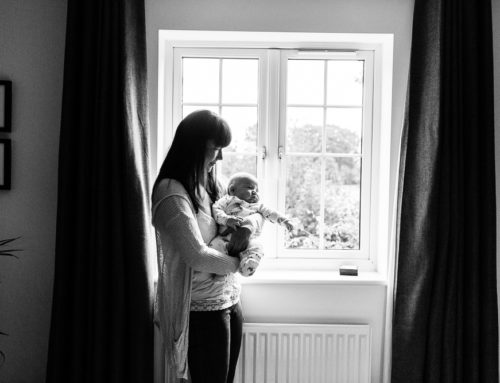In the second of my IVF posts I thought it might be helpful to set the scene and shed light on what’s in store for me over the next few months. Most importantly though, I want to thank you all for being so welcoming after my first post. I cried a few tears that day and I can’t tell you how much support I gained from all your comments.
At the beginning of the year I was familiar with the term IVF and I knew couples who had undertaken the procedure. I’d heard it was hugely expensive, stressful, invasive and painful. However it wasn’t until an appointment with our urologist during our fertility exploration period that it finally dawned on me what REALLY was involved.
I may well be making a generalised statement here but I have been hit by the realisation that a lot of people know very little about the details of the IVF procedure. I suppose you don’t necessarily know much about any medical intervention until you’re faced with it yourself, but I would say within my own family and friends only 1 or 2 of them had any knowledge of what’s involved.
I am not a medical professional but reassuringly I have now been given an outline of my own treatment plan and I feel much more confident in explaining what’s involved for me. I hope this is useful information for anyone who might have found out they’ll need assisted conception or for family and friends who might want to support couples during infertility treatment.
Step 1: Suppression
The first step in long-protocol IVF is to also known as ‘down-regging’ and this is the administering of medication to suppress your natural cycle. Some take birth control pills, others a nasal spray but in my case it will be a nightly injection of Buserelin injected into my thigh. Sounds fun doesn’t it?! This will happen from day 21 of my cycle and continues for several days after my period. It seems as though this first stage will take around two to three weeks. However down-regging can alter your cycle and I’ve read lots of women who found their bleed was delayed which meant the first stage took longer.
I’ve been told to expect headaches, fatigue, ability to cry at anyone and anything and hot flushes as the body is being put into a medically induced menopausal state.
Step 2: Stimulation and Monitoring
Each cycle we produce multiple egg follicles but only one follicle becomes dominant and releases a mature egg. During stimulation the medication results in multiple eggs maturing and this means the size of the ovaries can increase from the size of an almond to the size of an orange!
After a baseline scan to confirm my ovaries are ‘sleeping’ stimulation begins by injecting another drug, Menapur alongside the Buserelin.
I will inject both drugs for around a fortnight and during the second week I’ll visit the clinic every other day for scans (which unfortunately means getting well acquainted with a certain ‘dildo cam’) to check on the progress. When I’m ready I’ll administer a ‘trigger shot’ to tell my body to release the eggs. 36 hours later I’ll be in theatre.
Unsurprisingly common side effects around this time include bloating and abdominal discomfort as well as nausea, cramping, headaches and mood-swings.
Step 3: Egg Collection
Under sedation a needle will be be inserted vaginally into my ovaries and the eggs will be removed. Hopefully as a result of all that medication there will be multiple eggs to take off to the lab. On the same day my husband will also provide a sample and due to our condition may also need to undergo a procedure too – Surgical Sperm Retrieval. I’m sure I don’t really need to explain but it makes him wince every time we talk about it!
Step 4: Fertilisation
In IVF the egg and sperm are put together in a petri dish to fertilise. In our case we will be using the ICSI (intracytoplasmic sperm injection) procedure where one sperm is injected directly into the egg. They are then left to fertilise.
Step 5: Embryo Transfer
Dependent on the development of the embryos, around two to five days later I’ll be back in theatre to have one high quality embryo inserted into the uterus via a catheter. As our treatment is NHS funded we’re only allowed one embryo.
The injections stop and instead it’s time for the pessaries. Progesterone facilitates implantation and so I’ll be inserting capsules three times a day. Thank goodness for the iPhone alarm.
The Two Week Wait
Providing all goes to plan above we’ll then have a two week wait after fertilisation before we can take a pregnancy test.
Unsurprisingly I feel overwhelmed and nervous but I’ve also found I’m a little bit excited. I’m not looking forward to the potential side effects but can’t believe we’re one step closer to becoming parents. Although the procedure will be intense and very invasive I’m forever grateful for medical science – what can be done in a lab now is just incredible. By the time I write my next post we’ll have started the first cycle so for now all I can say is please wish me luck and see you on the other side! Thank you very much for all your support.
Image by Little Beanies.














What a fantastic post Jane – it’s so true that generally the knowledge re ivf is minimal. It seems we are quite in line with the timing of our treatment. I have my nurse consultation to go through my protocol and dates on Tuesday and then should start down regulating towards the end of October. Since your last post my husband has undergone surgical sperm retrieval (we weren’t sure if he was producing sperm at all but thankfully the procedure was a success and even though they had to obtain the sperm by scalpel rather than needle he didn’t find it too awful and has recovered well) and finally after almost a year and a half of appointments and trauma we’re ready to get started!
How are you coping with the stress? Unfortunately my sleep is shot to pieces at the moment and I’d love any tips! I’m doing a guided hypnosis once a day which is amazing and is really helping me relax during the day but at night I’m just a mess and that’s before all the hormones!! Wishing you all the luck in the world with your treatment xx
Hi Rachel,
All the luck in the world for your treatment cycle too.
I’m finding I’m sleeping much better than I was around a year ago. I found trying to conceive naturally quite stressful because at the same time work was exceptionally busy. I was so tired yet slept very little (not for the enjoyable reason either!)
Have you tried acupuncture? I find it very relaxing and it’s great to have a chat too!
So pleased to hear your husband has recovered from SSR and they found sperm! Did he have to have any time off work? J x
Hi Jane,
Yes, I tried acupuncture but strangely it caused me to have a lot of pelvic pain and shortened my cycle to 25 days so I stopped – I thought the amount this made me worry outweighed the benefits!
He had the op on the Wednesday and went back to work on the Monday. He does have spina bifida though and limited mobility so I think this increased his recovery. Generally I think they just recommend a day off work afterwards xx
Gosh, that’s a shame about the acupuncture.
Good to hear that recovery is quick for SSR. Best of luck with the next few months. Jx
Hi Jane
Thanks for another fab post. It can feel a bit isolating so its great you are able to share your experience. We are also at the same stage having just had our injection training.. I feel a bit daunted but husband came too so he is able to help if i have a paddy doing them! Im worried about the emotional side effects. We are having to pay because i am over 40 so it had been hard finding the funds. They dont accept credit cards annoyingly, which I was not aware of before. Are you trying accupuncture? I have been to see a guy who thinks he can help to increase the chances.. i feel like it is worth a shot. I am really looking forward to your next post and sending you lots of happy thoughts for a positive outcome for you. S
Hi Sarah,
Hope the injection training went well. My husband came with me too and was far better at it than me. It looks much easier on TV!
I’m sorry to hear about the financial stress too – this time is stressful enough already.
I am trying acupuncture too and I’m finding it very helpful. My acupuncturist is so knowledgable about nutrition too and I feel she’s really prepared me for what to expect at the next step.
Best of luck with your treatment too. Jx
This brings it all back! I’m currently laid in bed with my nearly 3 year old climbing all over me. We had ICSI also. I have to be honest I didn’t find the whole procedure too physically or emotionally draining – I had quite a straight forward process with minimal side effects (I remember I did feel quite teary at one point and wanted to cry for no reason a lot!) I got told to drink 2 litres of water a day during stimulation, I think this helps
Prevent OHSS.
Anyway once you get into the routine of the injections it becomes easier – I was a wuss and had to ice myself up before each injection!!
Good luck with everything xx
Hi Claire,
I love to hear a success story! Also reassuring to read your side effects were minimal. Do you mind me asking how long you took off work after collection? I’ve read really differing accounts.
Thanks for the water tip. Jx
Sorry for late response! If you see this – they did say that you didn’t need to take much time off, however I took the day and the day after off and then it was Easter bank holiday weekend so I ended up with nearly a week off with the fri and Monday bank hols. I would have been ok to go back after a couple of days I think. Similar after the transfer it was a Thursday so I took the Friday off and went back on the Monday. It’s a strange feeling in that 2 week wait!!! I actuallly had to wait something like 16 days with the dates hospital gave me to test – however after 6 days I just felt like I was pregnant so I did a test and it was positive and then I tested again at 10 days. We had a day 5 embryo transfer, so technically that point it had been 2 weeks since conception.
I really wish you all the luck in the world!!
I’m due to start my cycle next month so it’s so lovely to hear that you didn’t find the process too draining and that it was successful for you – I love hearing these stories! xx
Good luck to you Rachel. Hopefully we’ll all have positive stories to share too. Jx
What a useful and interesting post. Wishing you all the luck in the world. I wondered what your plan is for telling people and if you work for taking time off etc? Is it recommended you ‘carry on as normal’ through this type of procedure or take time off and rest? Xx
Thanks Sarah. I’m hoping to take several days off after the collection (my acupuncturist has said I’ll need bedrest with very gentle walking for a couple of days after) Then hopefully I’ll be able to work from home too. A friend of mine recently went through the procedure and thought she took too much time off (two weeks) and dwelled too much.
I have told my boss who has been wonderful and my closest work colleagues which has made the situation a lot less stressful.
Hi Jane – I went through IVF last year and now have a brilliant nearly 1 year old baby boy!! Happened first time for us.
A few things I wanted to mention – our nurses said it’s actually often easier for your partner to do your injections as injecting yourself can be tough if you’re not great with needles. Plus it helps them feel involved. Mine bought me a silly little present to open straight after each injection – lip balm, pens, magazines that kind of thing. I LOVED that!
I second the drinking loads of water. After the egg collection I had to have a pint an hour for 5 days (consultant instruction).
I had read that after embryo transfer it helps to laugh…..something to do with hormones. So that evening we watched a comedy to get the giggles going!
Ultimately I think you get loads of advice from all different directions at this time, but just do what feels right for you to stay as happy and relaxed as you can.
All the very very best of luck to you and anyone else going through the same thing xxx
Thanks for the tips Sarah. I will be mentioning to my husband about the present a day! Jx
Wishing you so much love and luck.
We’re unable to have birth children and explored IVF. Eventually, for what seemed like a million reasons, it became obvious that it wasn’t the right journey for us.
The way you’ve explained the process is perhaps the clearest and easiest that I’ve read, I’m sure this post will help so many other people in the future.
As for what lies ahead, I’m sending all the positive vibes your way and I hope your dream comes true.
We got our happy ending in a different way eventually, and I’m a Mum to a gorgeous two year old little girl now. Keeping everything crossed for you xxx
Thank you Karen for your very kind words. There are so many routes to parenthood and having explored donor insemination in a lot of detail and discussing adoption it’s clear family units are created in so many different ways. I’m so pleased you have your happy ending. Thank you for keeping everything crossed. Jx
Wishing you, and everyone else, the very best of luck with your treatment! My 3.5 month old is asleep on me and she’s the result of a cycle of IVF. I know it seems hard but I just always tried to remain optimistic and upbeat and focussed on the wonder of medical science. It can be draining but everyone reacts differently and I generally found it to be quite a straightforward process but it is a real emotional investment. Good luck on your IVF journey x x
Thanks Sam. Hoping for a straightforward time too! Jx
MIND BLOWN! As you say, it is amazing what can be done in a medical lab! Thank goodness for those clever scientists and medics! Wishing you all the best Jane! It sounds like you are in a great head space as you begin the process and feeling excited and positive that this is bringing you closer to becoming parents is bound to boost your chances! Massively routing for you xo
Thank you Helen. I think my eyes were the size of saucers when I first found out what I’d signed up to! Thanks for the support. Jx
It’s great that you are sharing what you will go through untill recently I had no idea how difficult and complicated IVF was. Good luck with your journey.
Also I would recommend a Podcast called Matt and Dorees Eggcellent Adventure. They discuss their journey but also listeners call in with their stories. It really helped me understand what my friend was going through without bombarding her with loads of questions about IVF. Shock I know she could be sensitive to.
Thanks Sharon. I listed to one of their podcasts the other day! You’re a lovely friend for educating yourself about the process. Jx
We got you – we’re all routing for you. A la Genie as cheerleaders in Aladdin xx
This made me laugh Claire! Thank you! Jx
Good luck Jane!!! I am currently 37weeks with our miracle baby girl from our second round of IVF. I had lots of acupuncture – before retrieval and also before and after transfer. I read ‘it starts with the egg’ and lived my life to that book – who knows if it made a difference but sometimes feeling like you are doing something when everything else is out of your hands is worth it. I had the day off work after transfer, my work was amazing in fact.
I would also advise drawing up a list of things to do during the 2ww – I found that to be such a challenging time because after doing SO much all you can really do is wait (and keep shoving pessaries up your bum!).
Best of luck and lots of love xxx
I had one round of IVF due to endometriosis and a wonky womb making it difficult to conceive naturally.
Just remember every women is different, for me the hot flashes during the suppressant stage were unreal, at one stage I had two fans on me at work!
I was given some sound advise from a lady in the waiting room at the fertility clinic, and that was to in inject in the hips, not in the tummy. You’ll be surprised at how sensitive your tummy becomes during the egg growing stage!
Good luck! I hope it all works out for you!!!
(Also I loved acupuncture, I found it really helped me relax!)
Thank you Lizzie and very true that every woman is different.
My clinic doesn’t advise going in the tummy so it’s all about the thigh for me which I think is good as there’s even more area to go at! Jx
MrsR I’m giggling to myself about the bum comment!
Congratulations! You really don’t have long to go until you meet your little miracle.
My clinic have advised painting Russian dolls in the two week wait?! I’m not sure if that’s really me. Would love to hear if there’s anything you recommend? Jx
Jane, such a brilliant and informative post. Thank you so much for writing and sharing it.
I just wanted to wish you a huge good luck, we’ll all be willing you on. Sending strength and love. xxxxx
Thank you Sian. Jx
Wishing you the very best of luck! You’re description is spot on and very clear. I have 2 beautiful girls (2.5yo & 6 months) as a result of ICSI and was fortunate to be successful first times with both of them. Acupuncture definitely helped me, aside from the research saying it helps with the actual process I found it relaxing and helped with the stress/anxiety/sleep. Most stressful parts for me were waiting for that call the day after egg collection to find out how many embryos fertilised and the dreaded 2ww – it’s plain torture snd your mind plays tricks on you (or mine did anyway!) Plan lots of nice things to keep busy.
Agree also with the comment about letting your partner do the injections so they feel part of it. My husband’s sperm was frozen from 10 years ago so he literally had no part to play during the process!
Zita West has good visualisation/mindfulness tracks for playing on the lead up to egg collection/embryo transfer.
Look forward to hearing your next instalment!
Thank you Sarah for the tips. So good to hear it worked for you (twice!) Jx
Ah wishing you all the luck in the world! We had ivf 6 years ago and got our 5 year old son and almost 4 year old daughter after a frozen embryo transfer. (We also have a bonus 11 month old after we got complacent!)
Try to channel the excitement! I actually found that the ivf cycle was easier than the previous ones as it was all science and definites instead of lots of unknowns. And in my experience the worst bit is the 2 week wait- you get yourself all physched up for the injections and procedures but it’s when you don’t actually have to do anything that I found I went a bit mad!! I’d book in lots of nice things to get you through!
Wishing you all the luck in the world! Take care of yourself as well xxx
Thank you Rachel.
I can imagine that happens with the two week wait. It does seem very intense up until that point. I’m starting a list now! Jx
Best of luck to you Jane, I hope you get your positive result first time round!
I went through the same procedure and when I was researching it online stumbled across a medical article which mentioned that IVF works 99% of the time in animals because they don’t know know what to expect and are therefore relaxed during the procedures. It went on to explain that stress is one of the key factors in negative results. I decided to try and push it out of my head altogether, so spent the day before the embryo transfer getting a massage and watching a funny film with my husband. It may just have been good luck but we got a positive result on our first go and I am still convinced it’s because I went in as relaxed as I could be in the circumstances. I would highly recommend a nice message if you can, it definitely helped me chill out and stop worrying for a while.
Will keep my fingers crossed for you!
Thanks for commenting Eleanor. I find it fascinating about the animal IVF and it really gives food for thought as stress is such a huge factor in all this. Great idea on the massage. Jx
I’m keeping my fingers crossed and my thumbs pressed (as we do in Germany) for you! Good luck and strong nerves for what’s to come!
Thank you Anja for the fingers and thumbs! Jx
Thanks for this post. A close friend went thro ivf 2 years ago and I wanted to understand what it would entail but googling was so overwhelming and it’s wasn’t even for me! So this straightforward guide is great. Lots of luck on your journey ( said friend now has her hands full with 18 mth and 1.5mth old!!!!)
Thanks Jen. I hope others will find it useful too. Jx
Hey Jane
You must be so excited to be getting started! I’m currently 31 weeks after falling pregnant on my first round.
Try not to worry too much about side effects. I was lucky and didn’t actually have any despite preparing my husband for me to be a hot hormonal mess! I did my own injections as I found the anticipation of waiting for him to stick me was too much. He was in charge of all the mixing of the drugs so still had his role to play.
The only thing I found was the bloating after egg retrieval was unreal. I only took that day and the day after off work and the bloating didn’t start until after that.
Although I found all the waiting for scans and results quite tough it was easier than trying naturally in a way because you feel you’re actually doing something.
Wishing you the very best of luck and I’m looking forward to following your story over the coming months. X
Also I meant to say how little people understand of the process. One of my friends thought you did all the drugs and then had sex to get pregnant at the end. Erm no!
Thank you Jen and congratulations on your pregnancy!
You mentioning your friend reminded me of listening to Izzy Judd being interviewed on Giovanna Fletcher’s podcast yesterday. One of Harry Judd’s friends thought their frozen embryo was sat in their freezer at home! Jx
Thank you so much for sharing this post Jane, So informative and clear. I admit I thought I knew a bit about what was involved but really didn’t know half of this.
Hope sharing it and the comments received/experiences shared have been a positive thing for you.
Sending lots of positivity to you both for this next stage on your journey.
All the best xxx
Thanks for the positivity Cat. I’m finding it very positive and it’s lovely to be given the opportunity to journal it all. Jx
Thanks for the great post Jane and all the best with your upcoming treatment.
I have a wonderful 21 month old son after one fairly straightforward round of ivf. At the time I became a bit overwhelmed with the science and what was coming up, so just focussed on the day to day; I also didn’t have any noticeable side effects from the meds. My husband did the mixing and injections and was a pro pretty fast!
We had two embryos put back on day 3 (retrieved 5 eggs in total), I was a bit upset with my low numbers but my son is proof that it only takes one. Gearing up to think about starting again for a sibling, so this post was a good reminder of what’s to come x
Best of luck Sarah with round 2. Thank you for sharing your positive story. Jx
Well Done for explaining it so well- it will help lots of people including those who are supporting couples. I wish I’d had this to read when I was starting! Hopefully this will be of some comfort to you- I had the exact same drugs (plus a couple of others due to pcos- I don’t have periods) and ICSI and I am currently looking at my little girl who is now a year old. I didn’t find the side effects anything like they sound and most I didn’t even get. The best thing I think is to take as much time to relax as you can and be there for each other. Get a good box set to crack on with in the evenings and try not to let the treatment be the centre of your world. The first time I did injections I was in a cold sweat and teary, by the end I was able to do it in the stationery cupboard at work in seconds without even thinking. Funny what becomes normal. Best of luck and relax as much as you can x
Thanks Lou. I did find it really helpful to write it all down!
Do you mind if I ask your Menopur dosage? Mine is 300 and mixing the four vials seems like it will take forever from the injection teach. I’m hoping that it will become as swift as your stationery cupboard activities! Jx
Do you know I can’t even remember the numbers now. It varried as they adjusted the dose depending on how it was all going. The mixing is what I found stressful at first and they provided the exact amount with no room for error- the first time I did it alone I forgot the little water ampule thing and had no spare so had to go back for one. I set up all my things on the desk in the spare room and had calm music on when I did it (Ben Howard, James Bay etc). I called it my lab ha ha. I’d asked my husband to help me first time but soon found I preferred to go in my lab and close the door and really take my time. You’ll find a groove of what works best for you- some ladies like their partner to do all that side of it but I liked to be on my own to concentrate. It definitely does become second nature, don’t be hard on yourself if you find it tough or get it wrong at first. I remember crying and saying ‘I can’t do it I feel thick now and I’ve messed it up!’ Which of course was not true. Be kind to yourself, what you’re doing is amazing and is shows you what tough stuff you are made of. I’m proud of what I did (3 cycles) and I think some people would be shocked if they knew what I went through in detail. I saw a quote which I think applies to IVF couples ‘you were given this life because you are strong enough to handle it’
Thank you for sharing this Jane, I too recently went through IVF and didn’t really know what to expect until my nurse planning appointment, I wish I had read this earlier! Our protocol was similar and it really wasn’t so bad, the only terribly painful thing was the withdrawal bleed otherwise I didn’t have any symptoms. You get used to being a human pincushion, I bruised badly at first but got the hang of it towards the end and the STIM injections are easy to administer.
Unfortunately we had total failed fertilisation which was never really discussed at any time (and it should be because it was absolutely devastating to have failed at that point) with a low number of eggs. We have unexplained infertility but we are both within ‘normal’ range of everything, so our issue is quite unique and not really fully understood (we are now delving into the depths of participating in research studies).
Anyway we are giving it another go with some tweaks, so I wish you the very best of luck, for us it really wasn’t so bad and it felt like we were doing something positive and productive instead of hoping and waiting. I hope it is the same for you and works out to be successful! I looking forward to reading more x
Jo, I’m so very sorry to read this and wish you all the very best with your next cycle. Jx
Hi Jane
I too didn’t have many side effects with my ICSI. I had headaches with the buserelin and was really quite bloated with the menopur but apart from one teary day I found the process ok.
After the transfer I pretty much stayed horizontal for 2-3 days. This wasn’t the advice given but the nurse said ‘don’t do anything you’ll regret’. So I took this on board. 12 days later I knew I was pregnant. The nausea had already commenced. I was so happy to feel sick!!
3 years later I had frozen embryo transfer and didn’t have the luxury of 3 days of rest with a toddler to look after. I didn’t do anything like the hoovering though. Again the nausea feeling was confirmed with a positive pregnancy test.
I did this as a single mum to be, so dreams can come true.
Keep positive and I really hope your dream comes true as well.
Congratulations Sally and wonderful to hear your dreams came true. Jx
We have a beautiful 3 year old daughter which we very luckily conceived after 1 round of ICSI. Everything was quite smooth except I did get OHSS which was horrid but I think that’s pretty rare these days. We’ve just had our second round in an attempt to have a 2nd. I found it much easier for my husband to do the injections, I thought I’d be fine but actually when it came to it, I found it so odd injecting myself! But the injections themselves are fine and I found it really helpful to just focus on one day at a time instead of looking too far ahead. The zita west visualisations and acupuncture helped me relax. It’s an emotional rollercoaster but worth every second. I wish you all the luck in the world. Xx
So sorry to hear your had OHSS Angela. It really does sound awful. Hope all goes well with the second round. Jx
Good luck Jane! I commented on your first post about this and am now awaiting our third cycle of ICSI. I didn’t really have any side effects either other than feeling ravenous when I was on Norethisterone (we were on the short protocol so took tablets for the down reg bit). I was on Menopur and suprecur and one of them always made my skin feel hot for about 15 minutes afterwards and then I’d get a slight tummy ache that evening which was eased by hot water bottle. I actually felt really good on the injections to the point that my husband asked the nurse if we could just have a lifetime supply of them!! It’s just the first few that are a bit daunting but like one of the other comments I preferred to do them on my own in a calm environment. Funnily enough, even though the cycles weren’t nearly as bad as I thought they were going to be I feel very anxious about the next one especially as they have suggested I could have an endometrial scratch…the name itself is horrible!! I really hope you have an easy ride with it and a positive outcome! Take it one day at a time x
Thank you Kate. Good luck with the scratch. Wishing to a very positive outcome. Jx
Hi Jane
I don’t often comment on here (mainly as I don’t have time to read blogs much anymore!), you see my husband and I had ICSI IVF 4yrs ago, they collected 10 eggs from me, called the following morning to say we had 7 embryos then let 3 go to day 5 blastocyst. One embryo was transferred then and is now my crazy wonderful 3.5 yr old eldest daughter, the other two embryos were frozen and are now my gorgeous 4 month old twin girls I’m staring at right now. Never ever ever in a million years when we were going through the endless procedures, appointments and consultations with the lovely people at NHS Hammersmith hospital back in 2012 & 2013, did I think that I’d end up with 3 daughters. So I just wanted to say hang in there, it feels so unfair and invasive and draining in every possible way at the time but I’m sure it will be absolutely worth every single moment for you too. I’m very open about the girls all being IVF and people find it fascinating that they are essentially triplets born 3yrs apart as they were all ‘made’ on the same day! I’d be more than happy to pass my email address on if you’d like to get in touch with any questions or anything. I’m sure the lovely ladies at RMF could sort that out if you’d find that helpful.
All the very best of luck and keep positive. I’m sure having a positive attitude channels its way to those eggs and makes a difference!!!!!
Thanks so much for your very kind words Anna. I find it incredible too that siblings can all be conceived on the same day! It’s just amazing. Jx